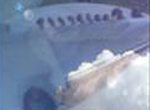![Show/hide content [x]](themes/dragonfly/images/minus.png) Menu Principale
![Show/hide content [x]](themes/dragonfly/images/minus.png) Info Utente
![Show/hide content [x]](themes/dragonfly/images/minus.png) Floating Sarod
![Show/hide content [x]](themes/dragonfly/images/minus.png) Discografia
![Show/hide content [x]](themes/dragonfly/images/minus.png) Visite 40015836pagine viste dal 1 Settembre 2007
|
Analysis of cutting conditions in the process of cross-cutti
| Autore |
Messaggio |
xysoom


Registrato: Mag 15, 2020
Messaggi: 1676
|
 Oggetto: Analysis of cutting conditions in the process of cross-cutti Oggetto: Analysis of cutting conditions in the process of cross-cutti
Inviato: 16-10-2021 8:18:48 |
 |
Analysis of cutting conditions in the process of cross-cutting wood by circular saws
An analysis was conducted of the effects of cutting conditions in the cross-cutting of wood using circular saws. Gradual wear of the saw blade cutting wedges impacted the entire cutting process. Two different types of circular saw blades were used. One blade type featured sintered carbide tips and 54 saw blade teeth, whereas the other had high-speed steel with 56 teeth; both saw-blades were 600 mm in diameter with a rake angle of 20°. The two wood species were spruce (Picea abies) and beech (Fagus sylvatica). During sawing, the timber was fed at a velocity of vf = 6 and 12 m·min-1. The cutting speed (vc) was set at 60 m·s-1, 70 m·s-1 and 80 m·s-1. The saw blades were coated with three types of PVD coatings. The least energy intensive saw blade was a sintered carbide-free saw blade with a coating (AlTiN) at a displacement speed of 12 m·min-1 and cutting speed of 60 m·s-1 with a power of 1310,63 W. Any change of a saw blade considerably affected torque for all the wood species, so a particular type of saw blade will always have an impact on torque. Other parameters distinctively and individually influenced the process of wood sawing.Get more news about Wood Cross Cutting Machine,you can vist our website!
An analysis was conducted of the effects of cutting conditions in the cross-cutting of wood using circular saws. Gradual wear of the saw blade cutting wedges impacted the entire cutting process. Two different types of circular saw blades were used. One blade type featured sintered carbide tips and 54 saw blade teeth, whereas the other had high-speed steel with 56 teeth; both saw-blades were 600 mm in diameter with a rake angle of 20°. The two wood species were spruce (Picea abies) and beech (Fagus sylvatica). During sawing, the timber was fed at a velocity of vf = 6 and 12 m·min-1. The cutting speed (vc) was set at 60 m·s-1, 70 m·s-1 and 80 m·s-1. The saw blades were coated with three types of PVD coatings. The least energy intensive saw blade was a sintered carbide-free saw blade with a coating (AlTiN) at a displacement speed of 12 m·min-1 and cutting speed of 60 m·s-1 with a power of 1310,63 W. Any change of a saw blade considerably affected torque for all the wood species, so a particular type of saw blade will always have an impact on torque. Other parameters distinctively and individually influenced the process of wood sawing.
|
|
| Torna in cima |
|
 |
|
Non puoi inserire nuovi Topic in questo forum
Non puoi rispondere ai Topic in questo forum
Non puoi modificare i tuoi messaggi in questo forum
Non puoi cancellare i tuoi messaggi in questo forum
Non puoi votare nei sondaggi in questo forum
Non puoi allegare file in questo forum
Non puoi scaricare il file da questo forum
|
|
![Show/hide content [x]](themes/dragonfly/images/minus.png) Menu Principale
Menu Principale HOME
HOME NADA YOGA
NADA YOGA AMBIENTI SONORI
AMBIENTI SONORI VISUAL SOUND
VISUAL SOUND MUSICA LIVE
MUSICA LIVE INDIAN MUSIC
INDIAN MUSIC UTILITA'
UTILITA' AREA RISERVATA
AREA RISERVATA![Show/hide content [x]](themes/dragonfly/images/minus.png) Info Utente
Info Utente![Show/hide content [x]](themes/dragonfly/images/minus.png) Floating Sarod
Floating Sarod![Show/hide content [x]](themes/dragonfly/images/minus.png) Discografia
Discografia![Show/hide content [x]](themes/dragonfly/images/minus.png)
![Show/hide content [x]](themes/dragonfly/images/minus.png) Visite
Visite






